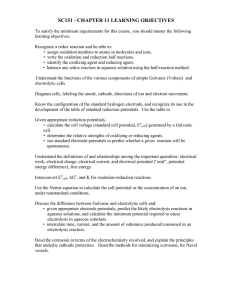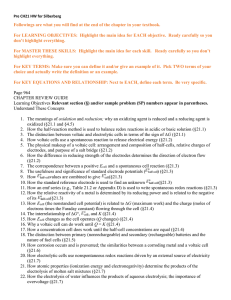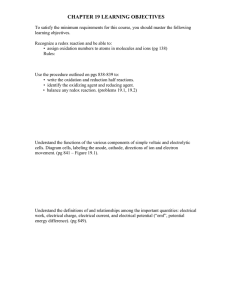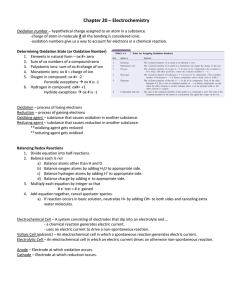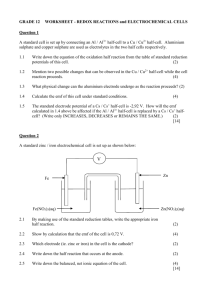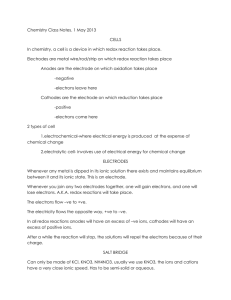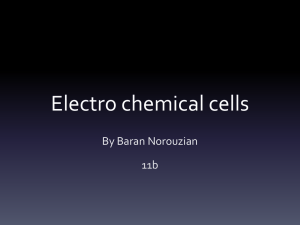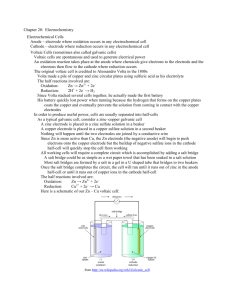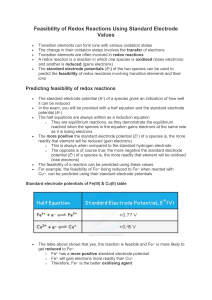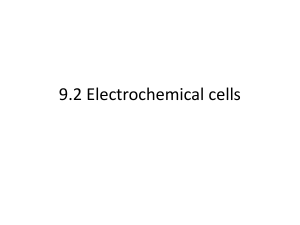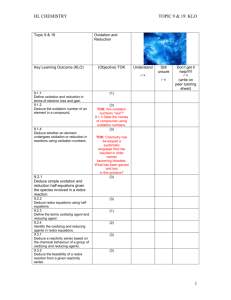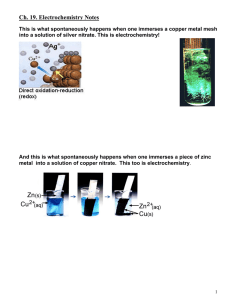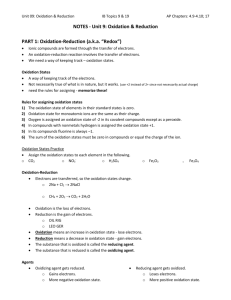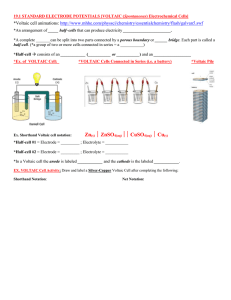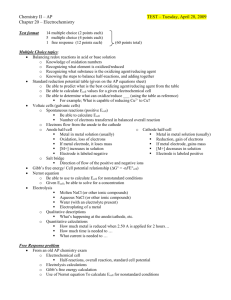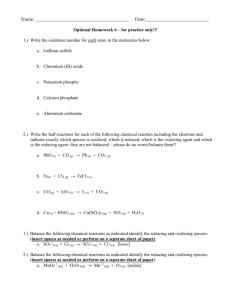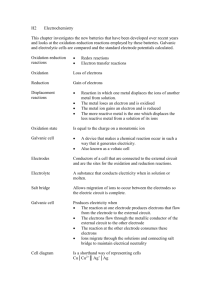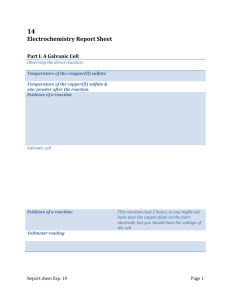Glossary of Key Terms – Redox
advertisement
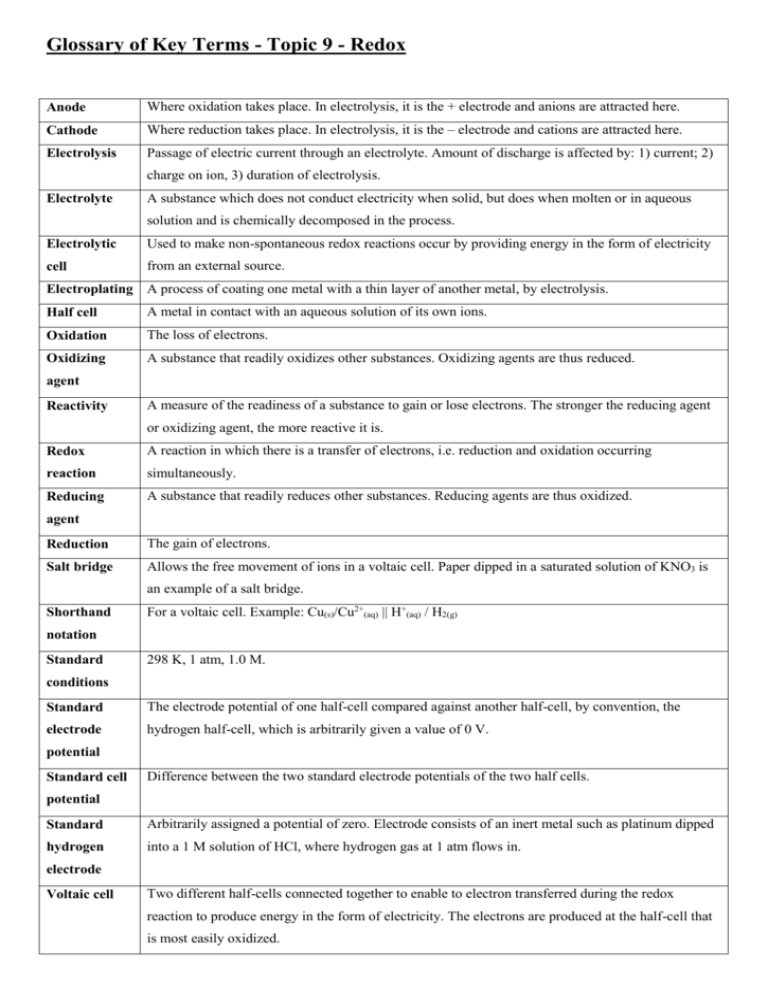
Glossary of Key Terms - Topic 9 - Redox Anode Where oxidation takes place. In electrolysis, it is the + electrode and anions are attracted here. Cathode Where reduction takes place. In electrolysis, it is the – electrode and cations are attracted here. Electrolysis Passage of electric current through an electrolyte. Amount of discharge is affected by: 1) current; 2) charge on ion, 3) duration of electrolysis. Electrolyte A substance which does not conduct electricity when solid, but does when molten or in aqueous solution and is chemically decomposed in the process. Electrolytic Used to make non-spontaneous redox reactions occur by providing energy in the form of electricity cell from an external source. Electroplating A process of coating one metal with a thin layer of another metal, by electrolysis. Half cell A metal in contact with an aqueous solution of its own ions. Oxidation The loss of electrons. Oxidizing A substance that readily oxidizes other substances. Oxidizing agents are thus reduced. agent Reactivity A measure of the readiness of a substance to gain or lose electrons. The stronger the reducing agent or oxidizing agent, the more reactive it is. Redox A reaction in which there is a transfer of electrons, i.e. reduction and oxidation occurring reaction simultaneously. Reducing A substance that readily reduces other substances. Reducing agents are thus oxidized. agent Reduction The gain of electrons. Salt bridge Allows the free movement of ions in a voltaic cell. Paper dipped in a saturated solution of KNO3 is an example of a salt bridge. Shorthand For a voltaic cell. Example: Cu(s)/Cu2+(aq) || H+(aq) / H2(g) notation Standard 298 K, 1 atm, 1.0 M. conditions Standard The electrode potential of one half-cell compared against another half-cell, by convention, the electrode hydrogen half-cell, which is arbitrarily given a value of 0 V. potential Standard cell Difference between the two standard electrode potentials of the two half cells. potential Standard Arbitrarily assigned a potential of zero. Electrode consists of an inert metal such as platinum dipped hydrogen into a 1 M solution of HCl, where hydrogen gas at 1 atm flows in. electrode Voltaic cell Two different half-cells connected together to enable to electron transferred during the redox reaction to produce energy in the form of electricity. The electrons are produced at the half-cell that is most easily oxidized.
